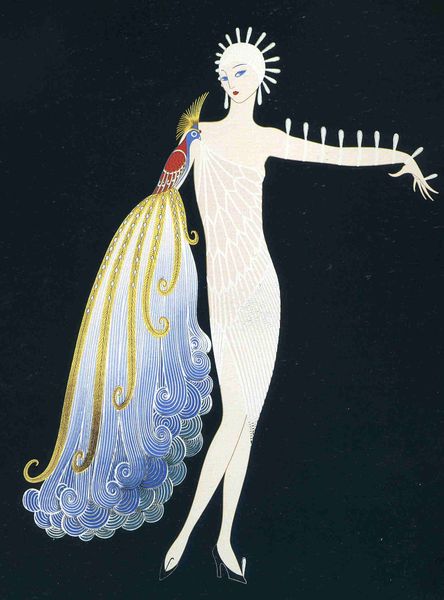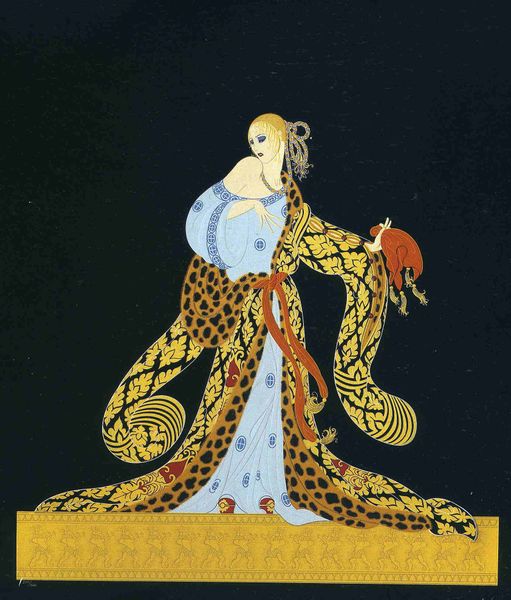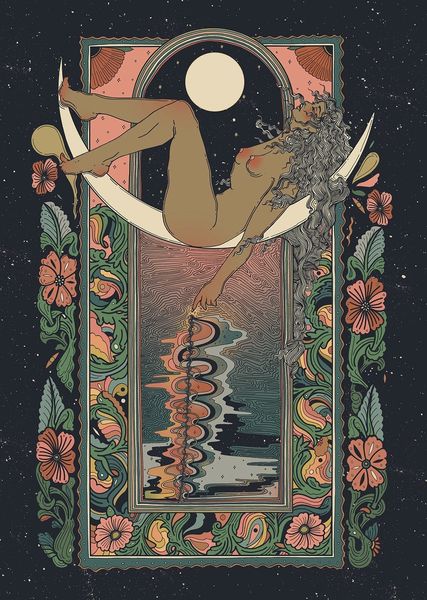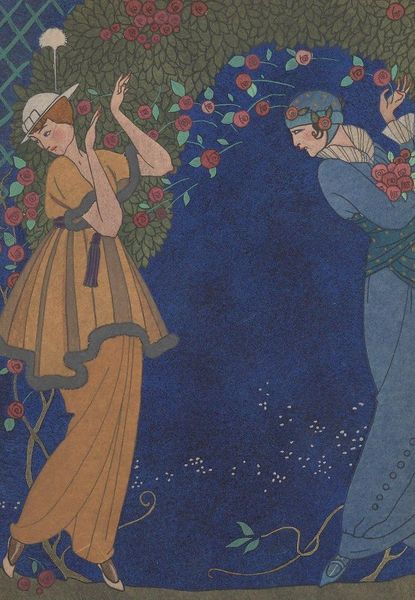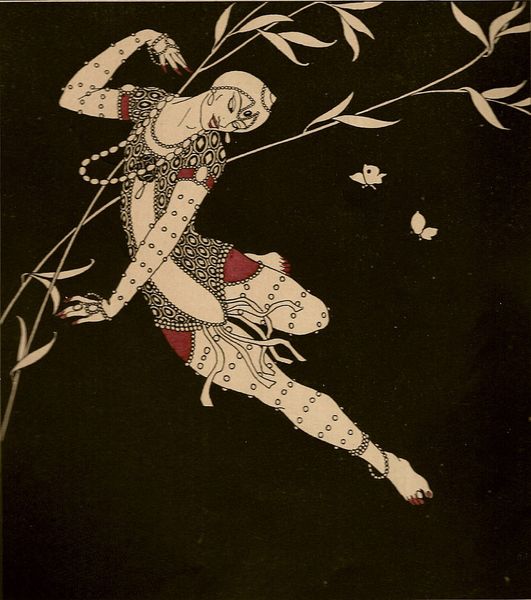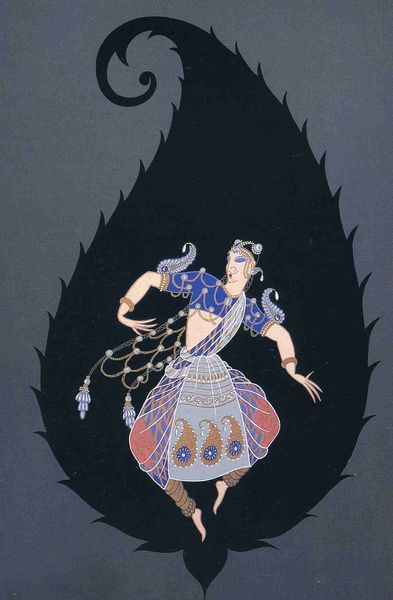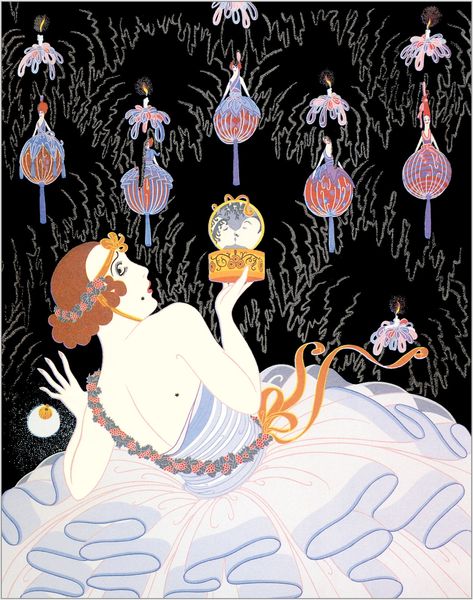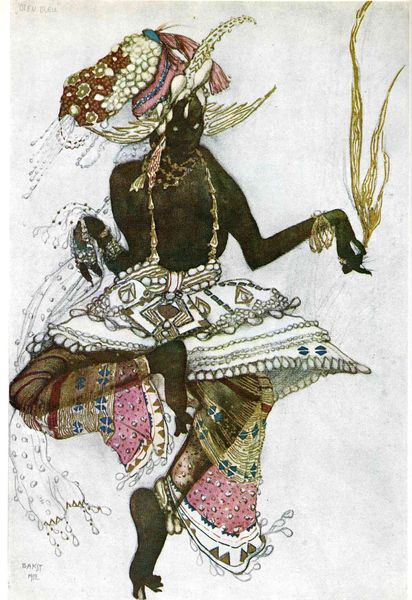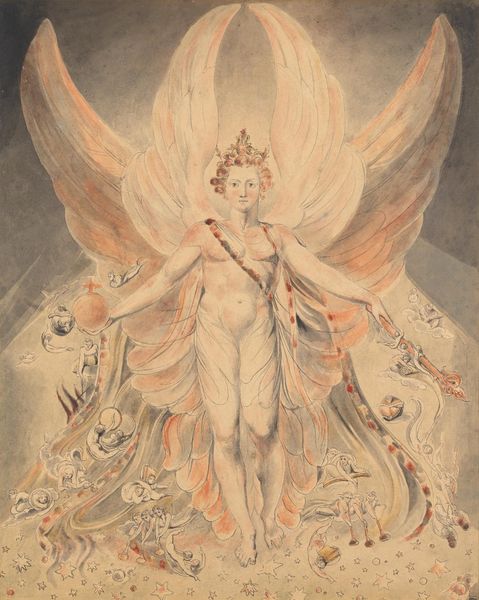
drawing, print
#
art-deco
#
drawing
# print
#
figuration
#
symbolism
Copyright: Erte,Fair Use
Curator: Looking at this drawing, it feels ethereal, almost dreamlike. It’s Erte’s "Ondee," and its elegance just captivates you immediately. Editor: Absolutely. There’s a powerful Art Deco vibe at play, too. It looks almost celebratory with its palette and flowing linework. I'm instantly drawn in by that contrast of bold colours. Curator: Erte was known for working across theatre, fashion, and illustration; these artistic areas allowed the blurring of the gender performance for his patrons. He pushed these boundaries even further with pieces like “Ondee”. Can you tell me a little more about the visual symbolism we see? Editor: Absolutely. Visually, we're plunged into a space inhabited by a deity or perhaps even just a flapper caught in this net or current that seems to be of water and perhaps her own golden hair. Consider the circular motifs around her; there's the obvious bubble of smaller white circles as well as the single rope that encompasses her form as it moves around the frame. The dots might symbolize stars or molecular structure which contrasts the grounded bottom layer with linear organization. Curator: I’d argue it's Erte capturing the fluidity and almost otherworldly feeling of being submerged, maybe alluding to historical narratives featuring alluring figures from mythology such as sea goddesses. Its bold figures would play a massive role in challenging restrictive moral attitudes towards women during the late 19th and early 20th centuries. Erte managed to capture a sort of erotic aesthetic in this print. Editor: True. The figure’s body language gives an intense level of vulnerability with the extension of both hands out towards an uncertain grasp. The color use emphasizes the theme you’re building with its bold bronze figure being the main color focus; her form shines in a light, calling on more ancient references with bronzed deities and godlike figures that would entrance sailors or anyone encountering it! Curator: And in its essence, the work is very much Art Deco with these figures challenging the contemporary ideas of both the patriarchy as well as other conservative aspects. Editor: The drawing pulls viewers into its waters and has us question what we feel towards not only the figure herself, but its historical ties and ties to the grander picture of a free woman who embodies independence. Curator: So, next time, consider the work that we've engaged with as pushing those conservative and traditional lines of that period when the art was released! Editor: Precisely. Let’s keep exploring these dialogues across eras and cultures, discovering what more they will teach us about not just imagery and symbolism but us ourselves.
Comments
No comments
Be the first to comment and join the conversation on the ultimate creative platform.
